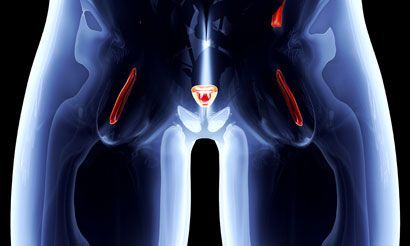News
Article
Targeting primary tumor, metastasized lesions linked to improved 5-year omHSPC survival
Author(s):
Targeting primary tumor, metastasized lesions linked to improved 5-year omHSPC survival

Radiation therapy is linked to improved 5-year survival rates when used to target both the primary tumor and metastatic lesions (total consolidative therapy [TCT]) in patients with oligometastatic hormone-sensitive prostate cancer (omHSPC), according to new data presented at the American Society for Radiation Oncology (ASTRO) 2024 Annual Meeting in Washington, DC, this weekend.
New findings from the single-center PROLONG study buck against current clinical guideline recommendations that patients with omHSPC receive radiation therapy targeted only to the primary tumor. The investigators reported 4 in 5 patients to receive radiation targeted at both the primary tumor and metastatic lesions had survived 5 years post-baseline, with limited adverse toxicity events.
Led by Xin Gi, MD, MS, of the Peking University First Hospital in Beijing, the international team of investigators had conducted the PROLONG trial to assess safety and survival outcomes in patients with omHSPC stratified by the target of radiation therapy.
The ambispective cohort analysis included 395 patients treated between October 2011 and January 2022. Eligible participants had pathologically confirmed prostate cancer, with imaging showing ≥10 distant metastasis—defined as non-regional lymph node, bone or visceral metastasis. The participant pool was comprised mostly of patients with oligo-metastatic tumors (53.7%), followed by oligo-progressive (26.6%), oligo-recurrent (14.7%) and oligo-persistent (1.8%) status at baseline.
Patients were provided daily image-guided rotational intensity modulated radiotherapy (IGRT-VMA), either by TCT or just the primary tumor. Investigators calculated overall survival and progression-free survival (PFS) per Kaplan-Meier method, log rank test and cox regression models.
Median primary tumor biologically effective dose (BED3) was 135.3Gy. The team irradiated 718 total metastases in the 395 patients; median BED3 of metastases was 121.3Gy.The median time from diagnosis to final follow-up or patient death was 60 months as of January 2024.
Investigators reported 115 patients having died as of the ASTRO data publication. Overall survival was 93.2% at 3 years, and 79.5% at 5 years, with a median overall survival of 102 months. Both Gleason score and prostate-specific antigen (PSA) levels at diagnosis were independent prognostic factors for overall survival.
Only 4.6% of treated patients reported an acute genitourinary or gastrointestinal toxicity grade of ≥2, each.
Among the de-no oligo metastasis subgroup, median overall survival and PFS rates were not reached among patients receiving TCT; patients with higher PSA or T1/2 scores at baseline were more likely to report improved PFS. Among the oligo-recurrence group, the median overall survival rate was not reached, and the median PFS was 37 months.
Among the oligo-progressive group, median overall survival was 85 months (95% CI, 65 – 105), and median PFS was 11 months (95% CI, 8.5 – 13.5). And in the oligo-persistence group, median overall survival and PFS were not reached.
Qi and colleagues concluded that the 5-year results of the PROLONG study showed “excellent” tolerability of TCT in patients with omHSPC, as well as promising longterm efficacy by survival rates, despite clinical recommendations.
“Radiation therapy for the primary tumor and all metastatic lesions has better survival than clinical studies of prostate radiotherapy alone, especially for patients with HSPC, shorter interval between diagnosis and radiation therapy, and lower metastatic burden/volume,” the team wrote.
References
Qi X, Li HZ, Gao XS. Radiotherapy of the Primary Tumor and All Metastatic Lesions in Oligometastatic Prostate Cancer: 5-Year Results of Prolong Study. Poster presented at: American Society for Radiation Oncology (ASTRO) 2024 Annual Meeting. Washington, DC. September 29 – October 2, 2024.
Newsletter
Stay current with the latest urology news and practice-changing insights — sign up now for the essential updates every urologist needs.

















